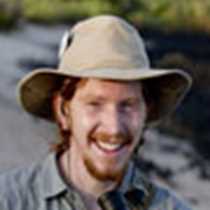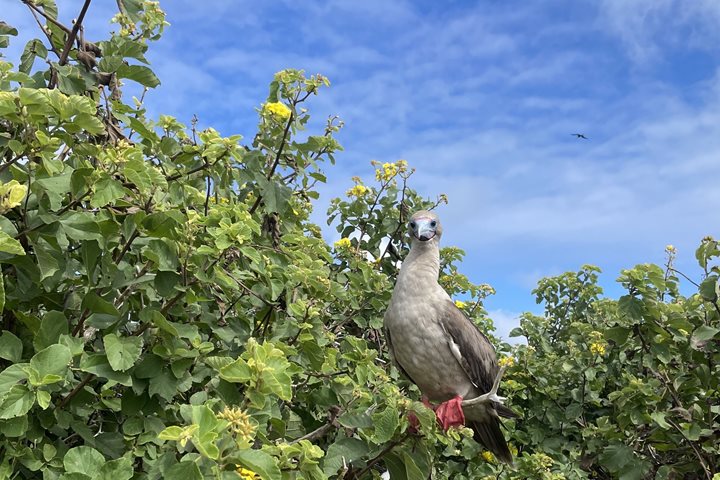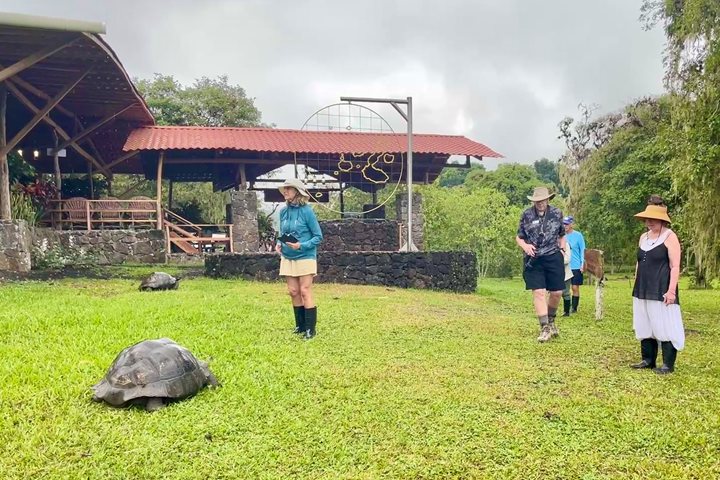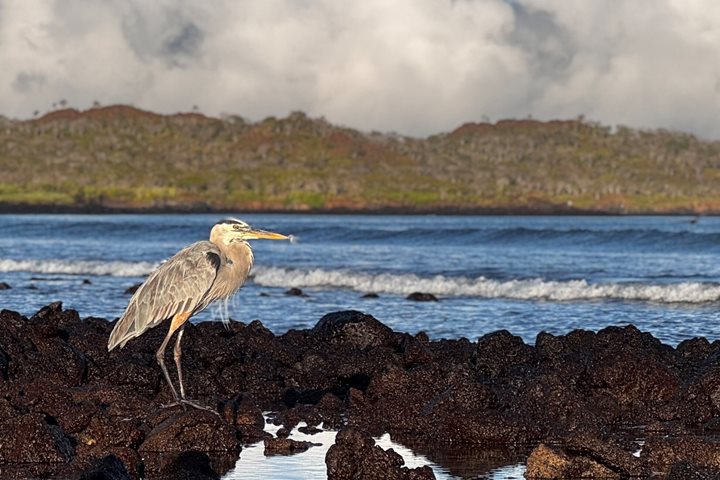Monday 4th September, bright and warm, was a day like no other. We had navigated all night to reach Fernandina and Isabela, the most remote islands of the Galápagos Archipelago. We landed at Fernandina’s northeastern tip, Punta Espinosa, for our morning expedition. Thanks to its highly productive waters, this small peninsula has a large marine iguana population. There were beautiful textures of pahoehoe lavas everywhere, evidence of the volcanism that created this archipelago. Galápagos sea lion pups played in the nearby tidal pools; and a small colony of endemic flightless cormorants fascinated us. Back on board, we spotted a pod of killer whales or orcas; and later in the morning, we snorkeled off Punta Espinosa, amid a number of Pacific green sea turtles. Everything was calm and normal during lunch, until—a volcanic eruption at “La Cumbre,” the summit of Fernandina—the first eruption there since 2009. And there we were, at the right time and place! A tall plume of vapor and ash rose high, a magnificent view against a blue and cloudless sky. In the afternoon, we explored Punta Vicente Roca, located in the outside rim of the Ecuador volcano on northern Isabela. This stunning coastline is the home to flightless cormorant, Despite the surrounding beauty— brown noddies, blue footed and Nazca boobies, and soulful Galápagos fur seal—our eyes were glued on the distant activity at the Fernandina volcano. At sunset, everyone gathered on the deck for a wine tasting, and the most amazing show nature offers—an erupting volcano. As the night deepened, the spectacle became more dramatic, with red-hot lava flowing down the slopes of Fernandina. Unbelievable! We were truly privileged to be in a perfect place at a perfect moment: Galápagos at its surprising best!
5/29/2025
Read
National Geographic Gemini
Genovesa Island
Genovesa is considered one of the Galapagos crown jewels, and today it was showing off all of its splendor. Immediately after breakfast we put on our sturdy shoes and set out to explore Prince Philip’s Steps. This area is known for opportunities to observe not only large colonies of nesting Nazca and red-footed boobies, but maybe, just maybe, the short-eared owl which exhibits diurnal behavior on this island. After this walk we got ready for a dip in the Pacific Ocean and snorkeling along the inner coast of this caldera. The afternoon was equally amazing as we disembarked to explore Darwin Bay, along a short and easy trail that was packed with wildlife. Here we observed not only nesting frigatebirds, red-footed boobies, and Nazca boobies, but also a few yellow-crowned night herons. It was another incredible afternoon in the Galapagos Islands.









